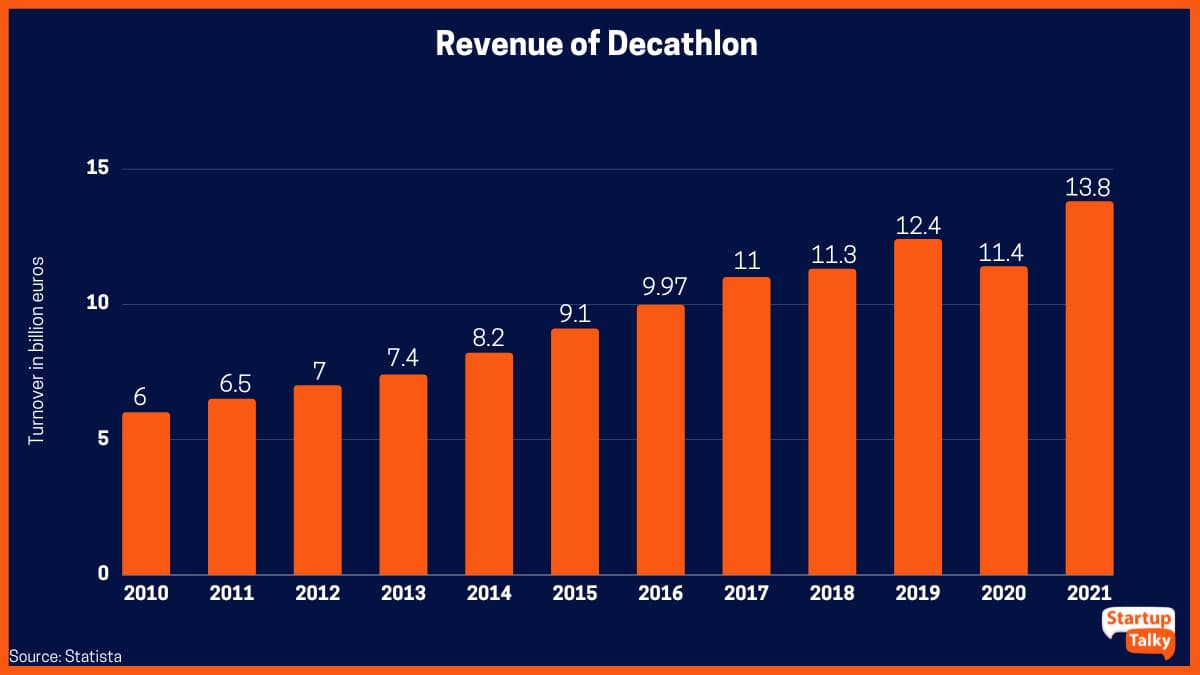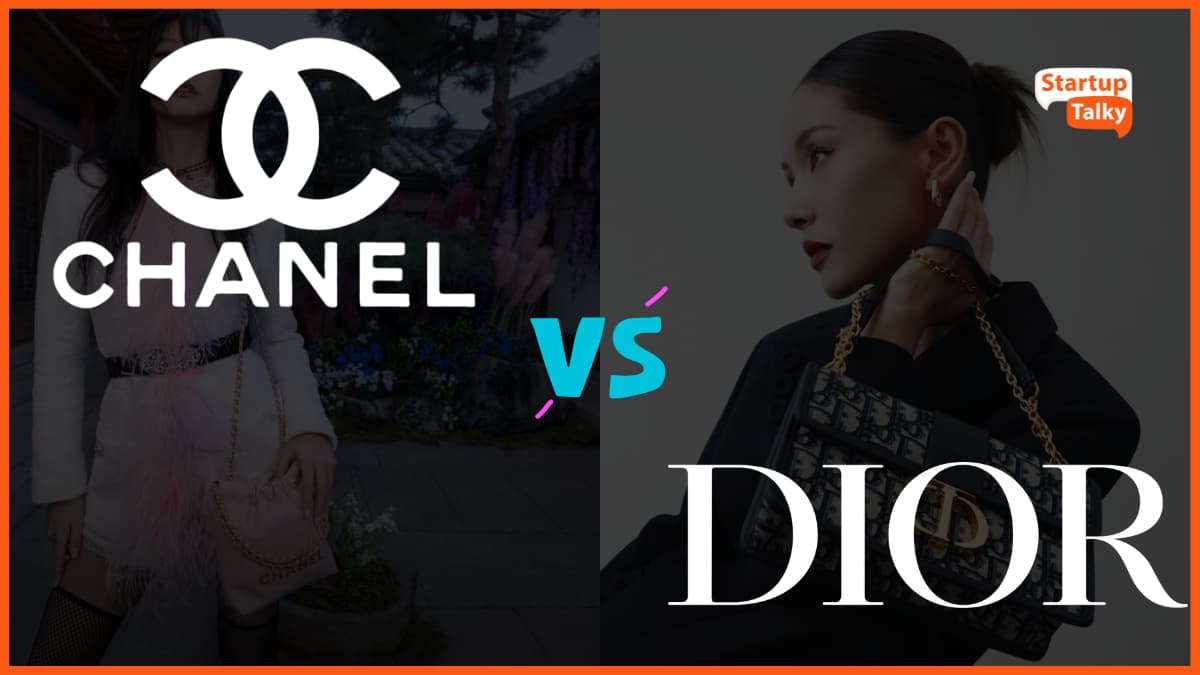In the ever-evolving world of sports and fitness, one name stands tall, outpacing the competition and breaking records like a true decathlete. Meet Decathlon, the global sporting goods retail juggernaut, founded on the principles of passion, performance, and perseverance. With its roots entrenched in France, Decathlon has risen to conquer the world, leaving a trail of remarkable achievements and awe-inspiring figures in its wake.
The journey of Decathlon commenced with a simple yet profound idea – to cater to every sportsperson’s needs under one roof. Inspired by the all-encompassing nature of the “décathlon” – a ten-event competition demanding versatility and skill, the company set out to provide a comprehensive range of sports equipment and gear for enthusiasts of all disciplines. It was in Villeneuve-d’Ascq, France, that the foundation was laid, and today, this very location hosts its colossal flagship store, a testament to its unwavering ambition.
Over the years, Decathlon’s tenacious pursuit of excellence has borne fruit, propelling it to the summit of the sporting goods industry. With annual revenues soaring beyond the €13.8 billion mark in 2021, their sales growth averaging an impressive 10% annually over the last five years, and an expanding presence in over 50 countries worldwide, Decathlon’s dominance is undisputed. Notably, the brand’s online sales, accounting for a fifth of its total revenue, reflect its successful foray into the digital realm.
Decathlon’s unyielding social responsibility has not gone unnoticed. Engaging in philanthropy and supporting charitable causes, they have touched lives beyond the realm of sports. As they stride into the future, guided by the image of a decathlete in their iconic logo, Decathlon continues to inspire the world with their unparalleled range of stores – from bustling city outlets to sprawling megastores – catering to athletes and fitness enthusiasts alike.
With unwavering passion and an indomitable spirit, Decathlon not only celebrates the love for sports but also embodies the spirit of victory that defines the decathlon event itself. As they continue to push boundaries, Decathlon is poised to leave an indelible legacy in the annals of sporting history.
Decathlon Target Audience
Decathlon Marketing Mix
Decathlon Marketing Campaigns
Decathlon Marketing Strategies
- Focus on Affordability
- Own-Brand Products
- Strong Omni Channel Presence
- Data-Driven Marketing
- Engaging Social Media Presence
- Sponsorship of Sporting Events
- Inclusive Campaigns
- Customer-Centric Approach
Decathlon Target Audience
Decathlon, the world’s largest sporting goods retailer, has a broad target audience encompassing people of all ages, genders, and socio-economic backgrounds. Their marketing efforts are specifically aimed at beginners, families, active lifestyle enthusiasts, and value-conscious shoppers. Their products and marketing materials make sports accessible to beginners, while a wide range of offerings cater to families with kids’ sportswear, toys, and camping gear. The company’s marketing showcases people enjoying outdoor activities like hiking and biking, appealing to active lifestyle enthusiasts. Decathlon’s affordability and loyalty program attract value-conscious shoppers. Their target audience spans globally, with stores located in urban and suburban areas, uniting people interested in sports and active living. Decathlon’s inclusive approach resonates with a spirited community, inviting them to embrace the joy of sports and embrace the athlete within.

Decathlon Marketing Mix
In the dynamic arena of sporting goods, one brand stands out with an unparalleled marketing mix that embraces innovation, affordability, and global accessibility. Decathlon is the sporting powerhouse that caters to athletes of all levels, from beginners with big dreams to seasoned professionals seeking excellence. Let’s explore the core elements of Decathlon’s marketing success, where a fusion of product variety, strategic placement, competitive pricing, and captivating promotions propels them to the forefront of the industry.
Product Mix
Decathlon’s diverse product range sets the stage for athletes to shine in any sports arena. Their offerings span clothing, footwear, equipment, and accessories, meticulously designed to cater to the needs of all sports enthusiasts. From vibrant activewear to cutting-edge sports gear, Decathlon leaves no stone unturned. What truly distinguishes them is the array of in-house brands, meticulously crafted to combine top-notch quality with wallet-friendly prices. By controlling the production process, Decathlon ensures that its products exceed expectations, making sports accessible to all.
Price Mix
Decathlon’s ethos of affordability is the heartbeat of its success story. Their products are strategically priced lower than those of competitors, making the allure of sports within reach for a wider demographic. To sweeten the deal, their loyalty program offers discounted prices to members, rewarding them for their passion for sports. The cherry on top? A price match guarantee, showing their unwavering commitment to offering the best value to customers. Decathlon’s pricing prowess sets them apart as a brand that champions athletes, regardless of their budget.
Place Mix
With a global footprint of over 1,600 stores in more than 50 countries, Decathlon becomes a beacon of inspiration for sports enthusiasts worldwide. Their strategic placement in urban centers, suburbs, and shopping malls ensures that they are just a stone’s throw away from their customers’ hearts. But the journey doesn’t end there – Decathlon embraces the digital era with an online store that reaches customers in over 100 countries. In a seamless fusion of physical and virtual presence, they cater to the needs of an ever-evolving world.
Promotion Mix
Decathlon’s marketing symphony resonates through various channels, captivating its target audience with a harmonious blend of traditional and digital strategies. Television and print ads amplify their brand message, while digital marketing engages and excites online audiences. Social media becomes a playground of inspiration, showcasing people immersed in outdoor activities, and fueling the passion for active living. Decathlon’s sponsorship of sporting events further reinforces its position as a brand rooted in the heart of sports communities. And let’s not forget the power of word-of-mouth marketing, fueled by a legion of satisfied customers who swear by Decathlon’s value and quality.
As Decathlon continues to redefine the game, its marketing prowess ensures that athletes around the world can unleash their potential, fueled by a brand that empowers and uplifts, one sporting adventure at a time.
Decathlon Marketing Campaigns
Decathlon’s marketing prowess has been highlighted through a series of engaging and impactful campaigns that resonate with its diverse audience.
The Return to Sport campaign in 2018 successfully motivated individuals to reignite their passion for sports after a break, promoting exercise and an active lifestyle.
The EnjoySport campaign, launched in 2018, ingeniously promoted the company’s philosophy of inclusivity, making sports accessible to all, while emphasizing the joy and rewards of being active.
Decathlon Ireland – Enjoy your Sports
In 2019, the #FeelGood campaign showcased the comfort and style of Decathlon’s sportswear, appealing to fashion-conscious athletes.
The PlayFor campaign, launched in 2020, touched hearts by encouraging people to return to sports post-COVID-19, emphasizing its positive impact on physical and mental health.
What Do You#PlayFor
The Strive for the Finest campaign in 2022 struck a chord with fitness enthusiasts, urging them to unlock their full potential through hard work and dedication. Each campaign’s videos and social media posts encapsulated the essence of Decathlon’s brand, leaving a lasting impression on its target audience and beyond.

Decathlon’s marketing campaigns have effectively showcased the brand’s commitment to empowering athletes of all levels, nurturing a sense of community, and promoting the physical and emotional well-being that sports bring. By masterfully aligning their campaigns with their audience’s aspirations, Decathlon continues to ignite the spark of inspiration, enticing sports enthusiasts worldwide to embark on an unforgettable journey of athletic triumph.
Decathlon Marketing Strategies
In the fiercely competitive world of sporting goods, Decathlon stands tall as a trailblazer, wielding a powerful arsenal of marketing strategies that champion affordability, accessibility, and customer engagement. Let’s dive into the top marketing strategies that have propelled Decathlon to the zenith of success, capturing the hearts of athletes and fitness enthusiasts around the globe.
Focus on Affordability
Decathlon’s commitment to offering budget-friendly products is a cornerstone of its marketing success. With prices 20-30% lower than competitors, the company becomes an irresistible choice for value-conscious shoppers. This strategy widens their customer base, making sports accessible to a diverse range of enthusiasts.
Own-Brand Products
Decathlon’s unique position as a designer, developer, and manufacturer of its own brands gives them unmatched control over product quality and pricing. This ability to align products with their brand values, centered around inclusivity and accessibility, cements its reputation as a brand that caters to athletes of all levels.
Strong Omni Channel Presence
By embracing both physical and online retail channels, Decathlon ensures its products are within reach of customers everywhere. Their strategically located stores in urban and suburban areas, along with an expansive online store serving over 100 countries, create a seamless shopping experience, bolstering customer satisfaction.
Data-Driven Marketing
Decathlon’s savvy use of data provides them with invaluable insights into customer behavior and preferences. Armed with this knowledge, they craft targeted marketing campaigns, delivering personalized shopping experiences. For example, they track customers’ product interests, enabling tailored recommendations, which enhance engagement and conversion rates.
Engaging Social Media Presence
Decathlon’s social media mastery propels its brand into the hearts of millions. With captivating videos, inspiring stories, and interactive posts, they forge deep connections with their audience. This compelling social presence amplifies their message, creating a community that celebrates sports and active living.
Sponsorship of Sporting Events
By associating with prestigious events like the Tour de France and the Olympic Games, Decathlon elevates its brand profile. This sponsorship not only expands their reach but also provides opportunities to showcase their products to a captive audience of sports enthusiasts worldwide.
Inclusive Campaigns
Decathlon’s marketing campaigns exude inclusivity, appealing to athletes of diverse backgrounds and abilities. Initiatives like the PlayFor campaign after the COVID-19 pandemic and the Return to Sport campaign motivate individuals to rediscover the joy of sports, regardless of their circumstances.
Customer-Centric Approach
At the core of Decathlon’s marketing success lies a relentless focus on its customers. Through excellent customer service, product reviews, and community engagement, they nurture loyalty and trust, building long-lasting relationships with their audience.
Conclusion
Decathlon’s marketing brilliance is not just about selling products; it’s about fostering a global movement that celebrates the power of sports. By employing strategies that prioritize affordability, accessibility, and customer engagement, Decathlon has etched its name in the hearts of athletes and fitness enthusiasts worldwide. As they continue to innovate, inspire, and empower, Decathlon remains an unparalleled force, enriching lives and spreading the joy of sports to every corner of the world.
Marketers and start-ups can draw invaluable lessons from Decathlon’s success, learning the art of connecting with a diverse audience, while nurturing loyalty and trust. Embrace innovation, champion your values, and forge meaningful connections – just like Decathlon – to conquer the market, inspire millions, and create a lasting legacy in the hearts of your customers. The podium awaits, and the time to shine is now!
FAQs
What is the target audience of Decathlon?
Decathlon has a broad target audience encompassing people of all ages, genders, and socio-economic backgrounds. Their marketing efforts are specifically aimed at beginners, families, active lifestyle enthusiasts, and value-conscious shoppers.
What is the pricing strategy of Decathlon?
Decathlon’s products are strategically priced lower than those of competitors, making the allure of sports within reach for a wider demographic.
What are the top marketing strategies of Decathlon?
Below are the top marketing strategies of Decathlon:
- Focus on Affordability
- Own-brand Products
- Strong Omni Channel Presence
- Data-driven Marketing
- Engaging Social Media Presence
- Sponsorship of Sporting Events
- Inclusive Campaigns
- Customer-centric Approach












































